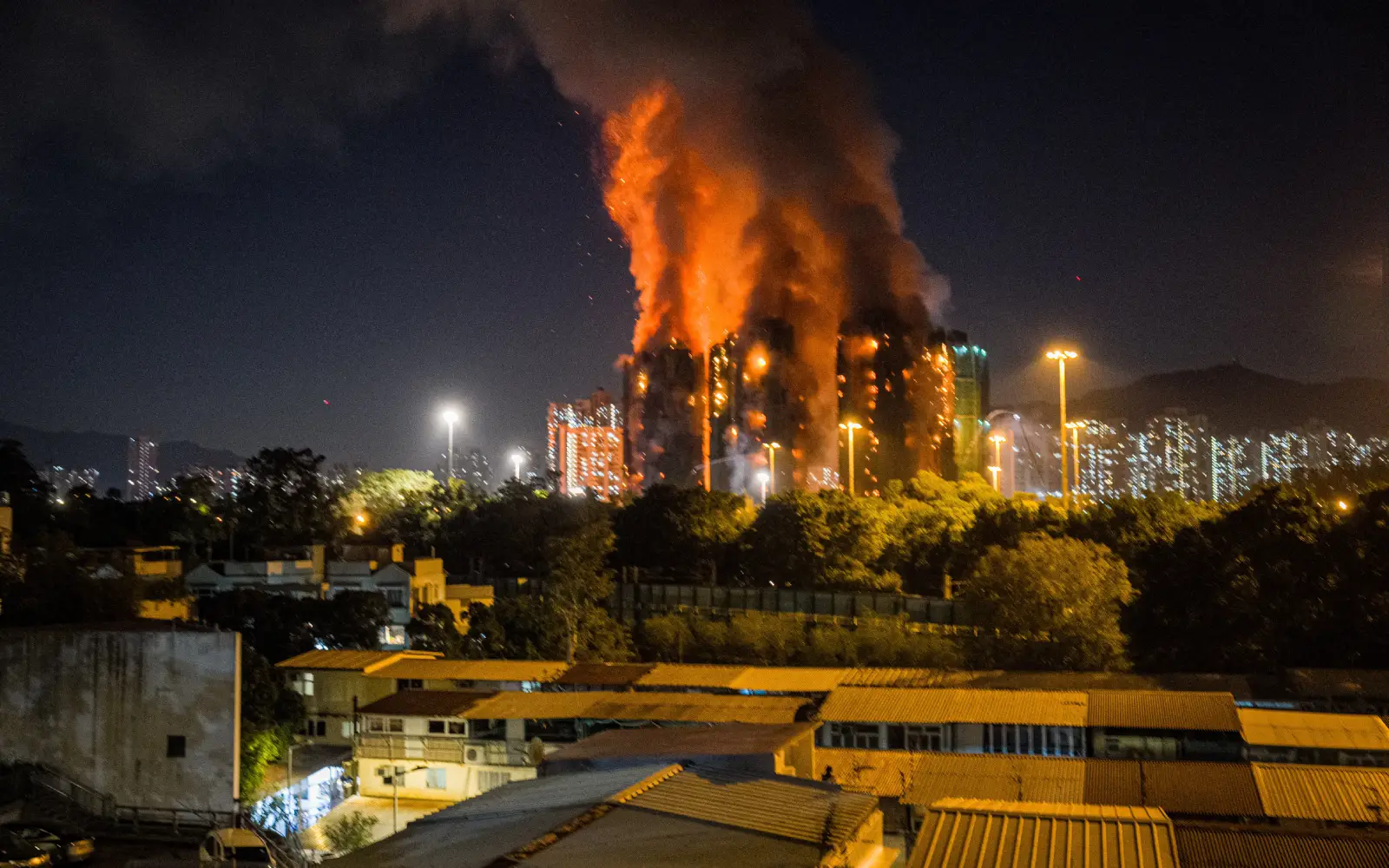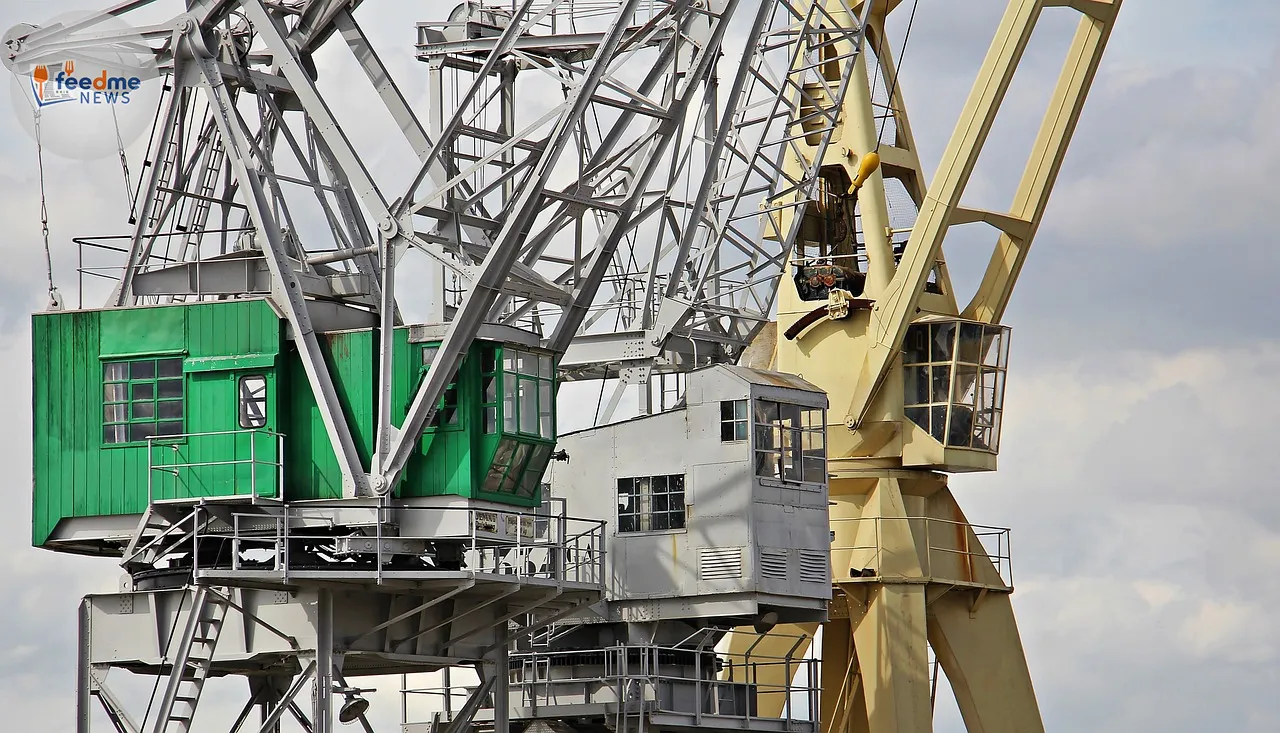Firefighters in Hong Kong battled through the night to reach trapped residents after a fast-moving blaze swept across a cluster of 31-storey tower blocks in Tai Po, killing at least 44 people and leaving hundreds unaccounted for. Officials said the fire began on external scaffolding at Wang Cheong House before it jumped to seven of the eight high-rises in the Wang Fuk Court residential complex. Rescue teams reported severe difficulties reaching upper floors as flames and smoke continued into Thursday morning. Police arrested three men as part of an unfolding investigation. Authorities confirmed the deployment of 26 rescue teams to the site as hospitals treated many people in a critical condition. The scale of the disaster and the number still missing drove urgent searches and renewed scrutiny of construction scaffolding across the city.
Authorities first received reports of the fire at 2.52pm on Wednesday at the Wang Fuk Court complex in Tai Po, in Hong Kong’s northern New Territories. By early Thursday, officials said the blaze continued to burn, hampering efforts to reach residents on higher floors.

Image Source: Free Malaysia Today
Rescuers race to find survivors as peril grows
Emergency crews pushed into smoke-filled stairwells and flats as they hunted for survivors. Officials said they faced dangerous heat and poor visibility while they tried to reach upper levels that remained cut off. Teams moved door to door, calling out for residents, while others used ladders and aerial platforms to reach people at windows and balconies.
Authorities deployed 26 rescue teams across the complex to widen the search and speed evacuations. Crews reported fresh flare-ups in several towers as embers leapt across gaps between buildings. Firefighters worked in rotation to limit exhaustion and heat stress. Commanders said they would keep increasing resources at the scene until they stabilised the upper floors and cleared access routes for medics.
How the blaze spread across Wang Fuk Court
Officials said the fire started on the external scaffolding of Wang Cheong House. It moved across bamboo scaffolding that rings several towers for ongoing works, then bridged to neighbouring high-rises. The dense layout of the complex, home to thousands, helped the blaze reach seven of the eight buildings. Flames travelled rapidly up building exteriors and into flats through windows, according to initial assessments at the scene.
The complex consists of multiple 31-storey towers set close together, which complicated containment as winds shifted. Fire crews focused on cutting off the most intense fronts while search teams worked in safer zones. By early Thursday, officials said the fire still burned in areas near the top floors, which limited entry and delayed a full sweep of all units.
Casualties mount as hundreds remain missing
Officials reported the death toll rose to 44 as the night progressed. They said hospitals treated many people in a critical condition, and they warned that numbers could change as crews reached more flats higher up. Authorities earlier reported 279 people missing, with families seeking updates as rescue teams moved through units and stairwells.
Emergency workers brought survivors to staging areas for triage and transfer to hospital. Medics treated smoke inhalation and burns, while counsellors supported people who left the towers with little more than the clothes they wore. Officials urged patience as they cross-checked hospital admissions, on-site registrations, and missing persons reports to produce a verified list.
Arrests and the line of inquiry
Police said they arrested three men as part of their investigation. Authorities did not immediately release further details about the arrests. They said they would examine construction practices and events on the scaffolding before the blaze erupted. The exact cause remains unknown, and investigators will seek to determine how the fire ignited and why it spread so fast across the complex.
Officials said they would collect evidence from scaffolding sections, lift lobbies, and corridors close to the initial outbreak. They will also review maintenance records and work permits linked to the scaffolding around Wang Cheong House. Investigators expect to interview workers, residents, and building managers as they build a timeline from the first alarm at 2.52pm on Wednesday.
Spotlight on bamboo scaffolding and building safety
The fire renewed scrutiny of bamboo scaffolding, a common feature on Hong Kong’s high-rises. Officials said the blaze started on the external scaffolding before it spread across the complex. Bamboo scaffolding can ring entire facades as workers replace windows, repair cladding, or paint exteriors. When a fire reaches exposed materials on an exterior frame, it can climb the outside of a building and threaten multiple floors.
Authorities said they would study the role of the scaffolding at Wang Fuk Court and the factors that allowed the blaze to move between towers. They will look at whether materials stored on scaffolds or coverings wrapped around them helped the flames travel. Officials said they would share preliminary findings as soon as they verified the sequence of events.
A dense complex under extreme strain
Wang Fuk Court houses thousands of residents across its eight towers. People live in close quarters in flats stacked over 31 storeys, linked by narrow corridors and lifts that can quickly fill with smoke. Officials said crews struggled to move past blocked or unsafe areas as the fire advanced across exteriors and reached upper floors.
Emergency services set up command posts around the site to keep access lanes open and coordinate lifts, hoses, and breathing apparatus. Firefighters used thermal cameras to search through smoke for signs of people inside flats. Crews marked cleared floors and units to avoid duplicate sweeps and to focus resources on the areas they had yet to reach.
Ongoing risks and the next phase of the response
Commanders said they would keep fighting the blaze until they reached all upper floors. They warned that conditions could change quickly as remaining hotspots flared and





